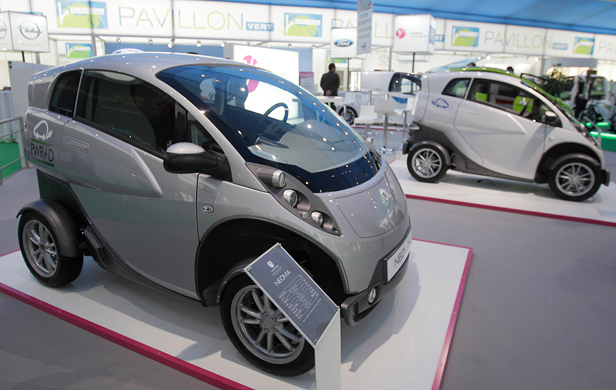Too Many Battery Factories, Too Few Electric Cars

In August 2009, President Obama announced a $2.4 billion grant program designed to create an electric vehicle battery industry in the United States. Three years on, the factories funded by those grants are sitting idle or operating well below their originally intended capacity.

The problem is simple. People aren’t buying enough electric cars, and most of those that are being sold contain batteries made by established battery makers in Asia.
It’s still early days for electric vehicles, but the idle factories point to the difficulty of starting a new high-tech industry from scratch.
The first chart, top left, shows the gap between the planned capacity for 2013 and the demand for batteries, based on estimates from Menahem Anderman at the consulting firm Advanced Automotive Batteries. The projected shortfall will happen even if the number of vehicles that use those batteries grows dramatically between 2012 and 2013, as is shown in the estimates in the second chart, below.

Some grant recipients have had to scramble to find customers. Dow Kokam, for example, which was awarded a grant of $161 million, has lined up a few customers, but no major automakers yet. Last week, it announced it would supply batteries for a small electric vehicle made by the French automaker Lumeneo. The batteries are less than a third of the size of those in full-size electric vehicles, such as the Nissan Leaf.
Even grant recipients that do have agreements to supply major manufacturers are struggling. LG Chem, for example, supplies battery cells for Chevrolet’s Volt. It built a factory in Holland, Michigan, with the help of an award of $151.4 million. But the plant isn’t producing any batteries yet. Volt sales have been lower than originally anticipated, and the battery cells for the Volt so far come from Korea, where LG Chem is based; even there, it’s still operating at only 20 to 30 percent of capacity, Anderman says. Companies in Asia had a head start on U.S. batteries companies because of their existing capacity for producing batteries for portable electronics or hybrid cars.
Hybrids, which sell in the millions, provide a much larger market for batteries. But the vast majority of hybrids use nickel-metal-hydride batteries, not the newer lithium-ion batteries these factories were built to make.
So far only a few automakers make electric vehicles, so electric vehicle sales could still increase as more automakers bring them to market. Grant recipient A123 Systems will supply the upcoming Chevrolet Spark. But GM has said it expects production of that vehicle to remain small.
Other automakers, including Toyota, are backing away from their original electric vehicle plans. Renault and Nissan are standing behind plans to push forward with electric vehicles, but they already get their batteries from suppliers in Asia (see “Renault and Others Debut Electric Cars”).
Electric vehicles can cost twice as much as a conventional gas-powered vehicle. Yet battery costs will stay high until they can be made at high volumes. Even then, it could take breakthroughs in battery technology (see “Solid State Batteries”) or years of incremental advances, as was the case with the Toyota Prius, to make electric vehicles widely competitive (see “Carmakers Find Ways to Make Cheaper Hybrids”).
Keep Reading
Most Popular
Large language models can do jaw-dropping things. But nobody knows exactly why.
And that's a problem. Figuring it out is one of the biggest scientific puzzles of our time and a crucial step towards controlling more powerful future models.
How scientists traced a mysterious covid case back to six toilets
When wastewater surveillance turns into a hunt for a single infected individual, the ethics get tricky.
The problem with plug-in hybrids? Their drivers.
Plug-in hybrids are often sold as a transition to EVs, but new data from Europe shows we’re still underestimating the emissions they produce.
Stay connected
Get the latest updates from
MIT Technology Review
Discover special offers, top stories, upcoming events, and more.